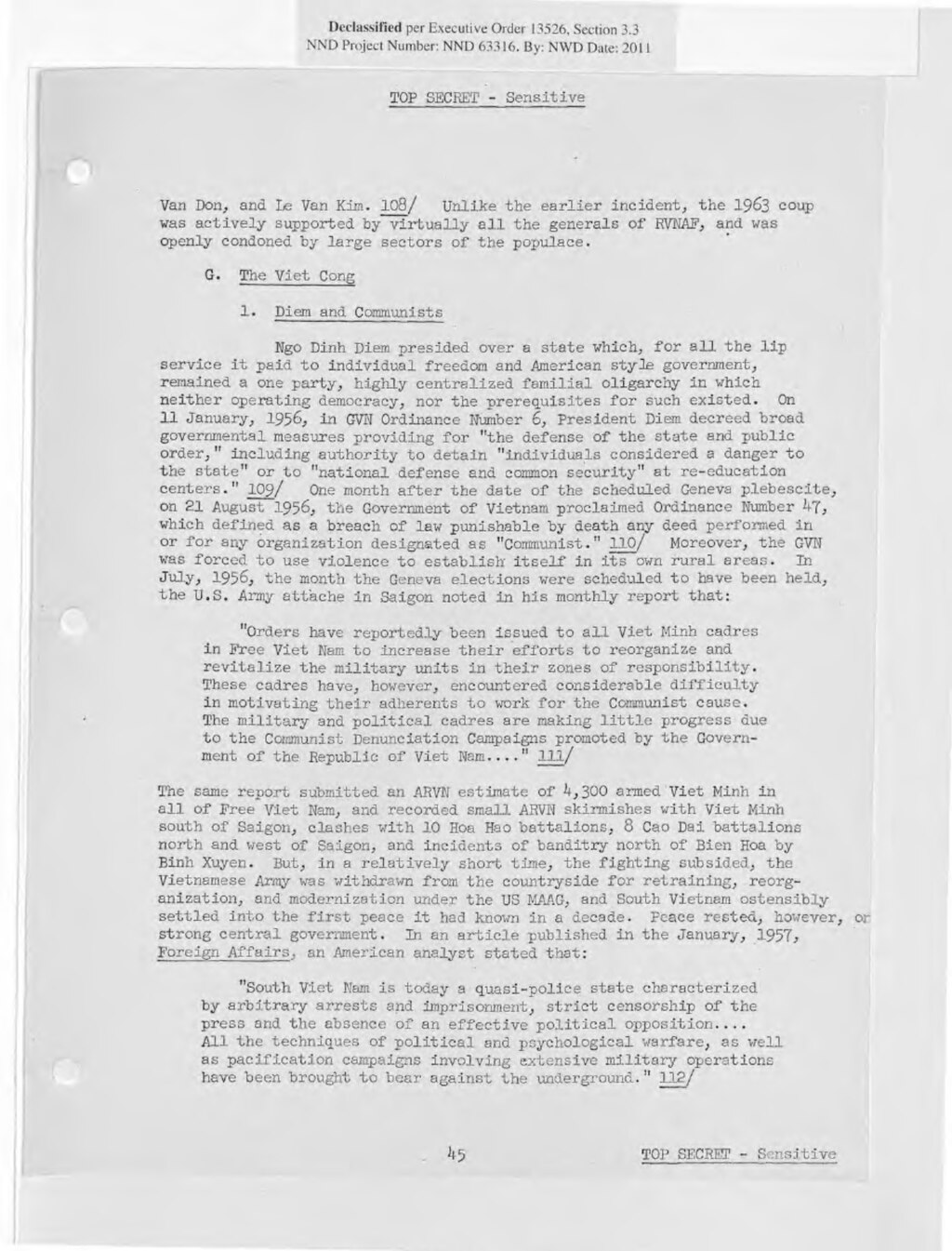Declassified per Executive Order 13526, Section 3.3
NND Project Number: NND 63316. By: NWD Date: 2011
TOP SECRET – Sensitive
Van Don, and Le Van Kim.108 Unlike the earlier incident, the 1963 coup was actively supported by virtually all the generals of RVNAF, and was openly condoned by large sectors of the populace.
- G. The Viet Cong
- 1. Diem and Communists
Ngo Dinh Diem presided over a state which, for all the lip service it paid to individual freedom and American style government, remained a one party, highly centralized familial oligarchy in which neither operating democracy, nor the prerequisites for such existed. On 11 January, 1956, in GVN Ordinance Number 6, President Diem decreed broad governmental measures providing for "the defense of the state and public order," including authority to detain "individuals considered a danger to the state" or to "national defense and common security" at re-education centers."109 One month after the date of the scheduled Geneva plebescite, on 21 August 1956, the Government of Vietnam proclaimed Ordinance Number 47, which defined as a breach of law punishable by death any deed performed in or for any organization designated as "Communist."110 Moreover, the GVN was forced to use violence to establish itself in its own rural areas. In July, 1956, the month the Geneva elections were scheduled to have been held, the U.S. Army attache in Saigon noted in his monthly report that:
"Orders have reportedly been issued to all Viet Minh cadres in Free Viet Nam to increase their efforts to reorganize and revitalize the military units in their zones of responsibility. These cadres have, however, encountered considerable difficulty in motivating their adherents to work for the Communist cause. The military and political cadres are making little progress due to the Communist Denunciation Campaigns promoted by the Government of the Republic of Viet Nam...."111
The same report submitted an ARVN estimate of 4,300 armed Viet Minh in all of Free Viet Nam, and recorded small ARVN skirmishes with Viet Minh south of Saigon, clashes with 10 Hoa Hao battalion, 8 Cao Dai battalions north and west of Saigon, and incidents of banditry north of Bien Hoa by Binh Xuyen. But, in a relatively short time, the fighting subsided, the Vietnamese Army was withdrawn from the countryside for retraining, reorganization, and modernization under the US MAAG, and South Vietnam ostensibly settled into the first peace it had known in a decade. Peace rested, however, on strong central government. In an article published in the January, 1957, Foreign Affairs, an American analyst stated that:
"South Viet Nam is today a quasi-police state characterized by arbitrary arrests and imprisonment, strict censorship of the press and the absence of an effective political opposition....All the techniques of political and psychological warfare, as well as pacification campaigns involving extensive military operations have been brought to bear against the underground."112
